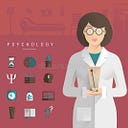Assessment tools for Child-Psychotherapy
Psychotherapy
“Psychotherapy involves the communication between client and
therapists that are focused to help people with psychological
problems and intended towards their well-being.”
Child Psychotherapy
“Child psychotherapy is the creation of the therapeutic relationship between child and therapist that largely focused on the social and emotional well-being of the child.”
Psychological Assessment
“Psychological assessment includes the variety of formal and
informal instruments and strategies in order to get information and arrive at diagnoses of a person.”
Basic assessment tools for child psychotherapy
The assessment of the child is quite complex than the adult ones,
as they lack maturity and not fluent in the language as well. So, the
assessment depends on the age of the child, their individual
development, and their learning needs.
There are the following assessment tools used for the child
psychotherapy:
1. Natural observation
2. Interviews
3. Portfolios
4. Parent and teacher ratings
5. Standardize tests
6. Personality Inventory for Children (PIC)
7. Play therapy
1. Natural observation.
Observation involves the studying of unforced or spontaneous
behavior of the client in natural settings. This is the basic
assessment tool used by most child psychotherapists.
Psychotherapists observe a child’s behavior in unstructured or
uncontrolled settings and gather data. For example, there is a
child with autism, the child psychotherapist will observe this
child in his school and his everyday activities.
2. Interviews
Assessments typically include clinical interviews, in which
child psychotherapists involve the child and his/her significant
others. It will be used to obtain a history of the child, identify the
child’s strengths and needs, and set the goals for the assessment.
3. Portfolios
It is the systematic and longitudinal collection of evidence
through the work children produced over a period of time. It
will also show the progress of the child.
4. Parent and teacher ratings
The information of the child also gathered with the help of
questionnaires and rating scales. It will help the child
psychotherapist to identify if the child’s behavior is typical
for his/her age or not. It integrates parents and teachers into
the assessment. For example, BASC 2 is the rating system
that assesses behavior and emotional functioning via (PRS and
TRS).
5. Standardize tests
It includes formal and standardizes psychological tests which
are administered and scored in a standard manner. For
assessing children the standardized test, inventories and checklists
are used. For example, Children’s global assessment scale
(CGAS). It is a numerical scale used by the psychotherapist to
rate the normal functioning of a child under age 18. Assessment
checklist for children (ACC) use among the children of age 4-
11 years. It measures the behaviors, emotional state, and traits of
a child.
6. Personality Inventory For Children (PIC)
The main focus of this assessment tool is to learn more about
the child’s problems in order to recommend the clinical
treatment. It is used to assess the emotional, behavioral, and
interpersonal adjustment of a child.
7. Play therapy
While assessing the child the therapist uses different play
therapies in order to engage the child and build rapport.
Therapists use different ways like role play, art, puppets, sand, and music.
